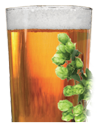Community Embraces New Word Game at Mid-Year Play Day This past Sunday, families at Takoma Park’s Seventh Annual Mid-Year Play Day had the opportunity to experience OtherWordly for the first time. Our educational language game drew curious children and parents to our table throughout the afternoon. Words in Space Several children gathered around our iPads […]
Read more Swirling a tasting of beer in my plastic glass, I was curiously intrigued by the presenter’s explanations about Trappist monks breaking off from the Cistercian order, the impacts of iso-amyl acetate (banana) and ethyl hexanoate (green apple) on flavor, and how dealing with soft water led to curious additions to beer, like oysters and seawater.
Swirling a tasting of beer in my plastic glass, I was curiously intrigued by the presenter’s explanations about Trappist monks breaking off from the Cistercian order, the impacts of iso-amyl acetate (banana) and ethyl hexanoate (green apple) on flavor, and how dealing with soft water led to curious additions to beer, like oysters and seawater.
Last night, I attended a presentation about the science and art of beer, which was a great reminder that many commonplace items have fantastic histories and intriguing science. A short selection of lambics, ales, porters, lambics, wheat beers, and so forth gives a culinary window into what ancient peoples drank, how trade, war and regulations influenced brewing, as well microbiology and basic chemistry. From the invite:
…beer director Greg Engert [pdf] of ChurchKey fame … will explain how brewing the perfect beer is as much science as it is art… From hops to froth, he’ll explain the scientific principles of beer brewing including how complex chemical reactions effect the flavor, color and aroma of a beer’s style. He’ll teach us the carbonation and gas laws of conditioning beer and the role temperature plays in the quality of a brew.
Some universities have multidisciplinary courses on beer, and there are lectures (e.g., Illinois Science Council has a series this year on the chemistry of beer, whisky and chocolate; OMSI had a 3-day event last year in partnership with the Rogue Brewing Company; the Museum of Life + Science in Durham has a evening event; and Adventure Science Center in Nashville had an evening event last year). These science events could be enhanced with some extra history and culture.
These are great ways to engage the public in thinking deeper about the culture and science of everyday things. For kids, the same could be done with ice cream, soda, candy and many other topics.

